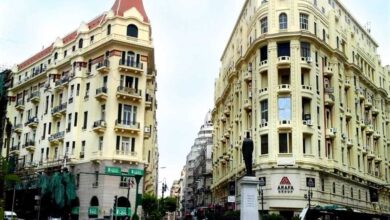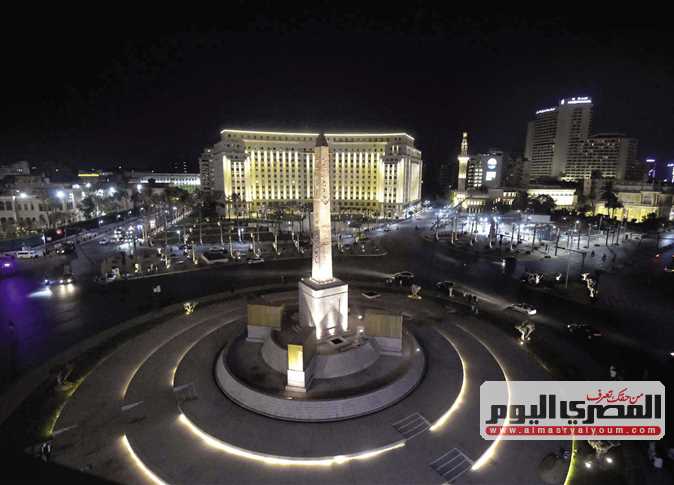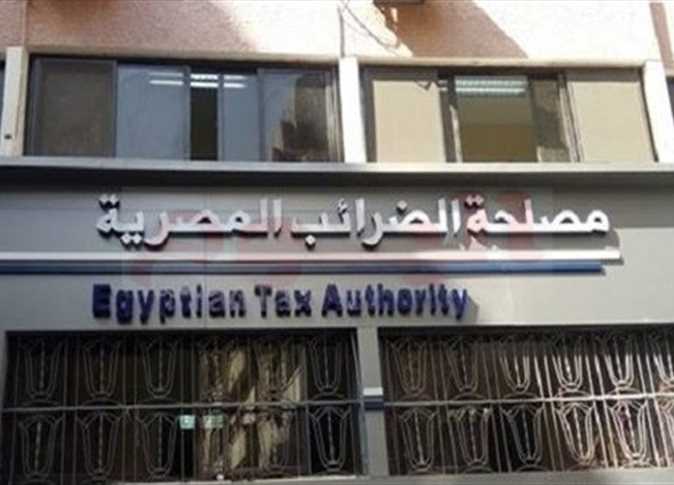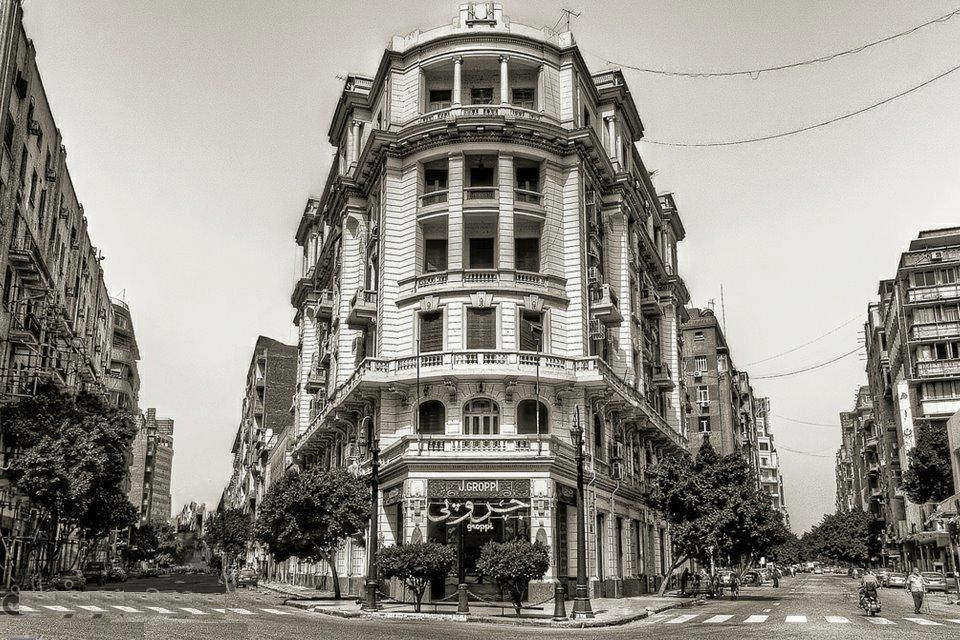As our streets become more crowded, suffocating and aggressive, there is a need for calmer and friendlier hideaways. Armed with sunshine and a pair of comfortable sneakers, I set off to explore the world of pedestrian Downtown. A striking mixture of colors, faces, sounds, textures, and smells characterizes these veins of life.
Here you will find a variety of attractions, from pirated DVDs to street performances to coffee and a shisha in the open air.
The moment you set foot on el-Borsa Street and the parallel el-Qadi el-Fadel, you encounter the prestigious Cosmopolitan Hotel which imposes a touristic presence in the area. The alley is covered with colorful plastic tables and chairs for hotel guests and early comers seeking their morning tea. Most establishments in the area offer a mix of hot and cold beverages, as well as shishas. While they don’t offer the lattes and cappuccinos available at more commercial coffeehouse chains, these street cafes immerse visitors in Cairo’s dynamism.
This part of the city has a long history. El-Borsa Street is where the Radio Union building was located before the 1952 revolution. Police officers prohibit anyone from taking pictures around the stock market and the Radio Union buildings, raising questions about how public the street really is. At any rate, one can’t miss the pink bookbinding shop with its inviting brown gates. El-Tagleed el-Hadeeth (also known as Le Moderne Reliure) stands as a vestige of a dying trade.
“I have been in the business of bookbinding for 45 years,” says Fouad Ahmed, the shop manager. According to the old man, business has dropped by 200 percent since ready-made Chinese goods, like notebooks and plastic files, first hit the Egyptian market.
The next pedestrian heaven is el-Shawarby Street, an open air shopping mall and a hub for pirated goods. There are shops on both sides and street merchants sell everything from hair bands and scarves to shoes and imported jeans. Most imported products come from China and Turkey, but carry the labels of international designers to attract buyers who appreciate brandnames but are careful about spending.
“The street has been known for its imported goods since the 1970s,” says one of the shop owners. My beautifully imitated fake Converse sneakers cost LE65. Carina, the bodywear shop, seems to be the only Egypt brand that sells well on that street, probably due to the increasing number of veiled women in Egypt.
The place is adjusting well to new shopping techniques and new competition in the market. Their battle weapon is low prices. “Inter Sound,” which I remember selling video and cassette tapes in my childhood, now sells pirated DVDs and CDs for less than half the price of originals. Merchants are friendly as they yell out names of their products and advertise their stores. “We have boxers,” one man screamed at me.
Finally, off Emad Eddin Street, an old hub for casinos and night clubs in the 1920s, is el-Alfy Street. This one is named after a Mamluk prince who founded Azbakia–a district remodeled by Khedive Ismail, in his attempt to modernize 19th-century Cairo, after Parc Monceau in Paris. Akher Sa’a restaurant is the street’s main attraction nowadays.
In the last few years the street developed a new air to it, experimenting with public art. A few years back, the festival Les Français aiment le Caire took to el-Alfy Street with bands like the famous Wust el-Balad who came on stage, en plein rue, to show that the street is a public space where anything can happen. El-Alfy Street is also strewn with convenient benches for dwellers to sit, rest, eat, or exchange words of love. It’s a spot where the busy pace of the city slows down.
If Downtown is the city’s heart, its pedestrian areas are Downtown’s own heart. They give a human face to this chaotic urban space and reinvent the meaning and function of “the street.”




